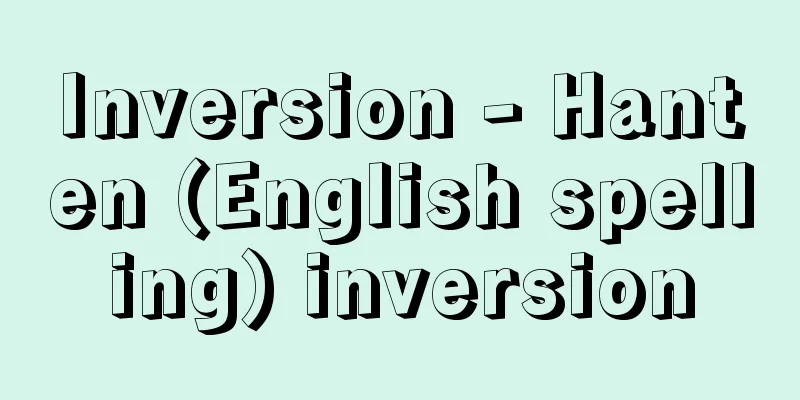Money lending business

|
A business that operates as a money lending business or an intermediary for the lending and borrowing of money. This does not include businesses that have specialized business laws established by law, such as banks, trusts, and insurance. The money lending business has changed significantly over the years. [1] Shortly after the Second World War, illegal lending became rampant, and in 1949 the Law on the Control of Money Lending Business, etc. was enacted, which made money lending a notification-based business and regulated the nature of business operations, including the acceptance of deposits and the prohibition of floating loans. [2] Subsequently, as a result of the emergence of businesses that collected small amounts of money from an unspecified number of people or engaged in deposit-like activities and went bankrupt, the Law on the Regulation of Acceptance of Contributions, Deposits, and Interest Rates, etc. (Contribution Law) was enacted in June 1954, repealing the Law on the Regulation of Money Lending Business, etc. of 1949. Restrictions on high interest rates and restrictions on money lending intermediary fees were then implemented. [3] In the 1970s, while the number of salaryman loans (sarakin) increased rapidly, their high interest rates and debt collection practices that ignored human rights became social problems, and in 1972 the Law Concerning the Promotion of Self-Regulation among Moneylenders led to the creation of prefectural and national organizations for the Common People's Finance Industry. In 1983, the Law Concerning the Regulation of Moneylending Business (Moneylending Business Regulation Law) was enacted and the Investment Law was revised, changing the moneylending business from a notification system to a registration system and strengthening supervision, as well as introducing regulations such as a prohibition on exaggerated advertising, prevention of excessive lending, and a gradual reduction in the maximum interest rate. [4] In the 1990s, after the collapse of the bubble economy, money lending businesses were included in the term nonbanks. Nonbanks were defined as "companies that conduct credit business without accepting deposits" and were incorporated into the financial system. Today, nonbanks are classified into the following categories: consumer loan companies (unsecured money lending to consumers), unsecured money lending to businesses, business finance companies (real estate-backed finance companies, mortgage finance companies, etc.), credit card companies, leasing companies, and other companies registered under the Money Lending Business Regulation Act; and housing finance companies (Jusen), which are exempt from the Money Lending Business Regulation Act. [5] Since the latter half of the 1990s, as the Heisei recession dragged on, banks have become more strict in their lending practices due to the problem of non-performing loans, and this has led to an increase in the number of victims of so-called "underground lenders" who lend at interest rates significantly higher than the maximum interest rate set by the Investment Law (29.2% per year from June 2000). As a result, an amendment to the Money Lending Business Control Law (commonly known as the "Underground Finance Act") was enacted to crack down on malicious illegal lenders, and came into force in January 2004. [6] After that, the Anti-Unauthorized Finance Act was made to "conduct necessary revisions within three years of its enactment," and in the context of the worsening problem of multiple debtors in the current severe economic climate, public opinion was growing for a comprehensive and fundamental revision of the Money Lending Business Act. As a result, revisions were made with a focus on (1) streamlining the money lending business, (2) curbing excessive lending, and (3) streamlining the interest rate system. Specifically, the revisions are as follows: (1) Streamlining of the Money Lending Business This consists of the following four measures. (a) The conditions for entering the money lending business will be tightened by raising the minimum net assets of money lenders (from 3 million yen for individuals and 5 million yen for corporations to 50 million yen) and introducing a qualification test for money lending business supervisors. (b) The Japan Money Lending Association will be established with the approval of the Prime Minister and based on the Japan Money Lending Association, and the association will establish self-regulatory rules, thereby strengthening the self-regulatory function of the money lending business. (c) In addition to strengthening regulations on the issuance of documents, such as introducing regulations on the documents to be submitted for revolving contracts (contracts to pay a fixed amount every month) and making it mandatory to submit documents in advance before entering into a contract, regulations will be strengthened not only against persistent collection activities during the day as well as at night, and regulations on the conduct of money lenders will be strengthened, such as by generally prohibiting money lenders from concluding insurance contracts under which insurance money will be paid in the event of the suicide of a borrower. (d) In order to deal swiftly with regulatory violations, in addition to cancellation of registration and suspension of business, orders to improve business practices will be introduced. (2) Curbing Excessive Lending This consists of the following two measures. (a) A designated credit bureau system will be established, which will designate credit bureaus that meet certain criteria, such as the size of their credit information and financial base, and require money lenders to provide personal credit information to these credit bureaus. (b) Money lenders will be required to investigate borrowers' ability to repay, and total amount restrictions will be introduced, such as a general prohibition on lending (excluding housing loans, etc.) where the total outstanding loan balance exceeds one-third of annual income. (3) Optimization of the interest rate system This consists of the following three measures: (a) Abolish the so-called gray zone interest rates (interest rates between the 29.2% upper limit of the Investment Law and the 20% upper limit of the Interest Rate Restriction Law) and lower the upper limit of interest rates for money lending businesses to 20%, the same as that in the Interest Rate Restriction Law; (b) Optimize the concept of interest rates by including contract conclusion costs and debt repayment costs in interest on loans made as a business; (c) Abolish special provisions for daily installment lenders and telephone secured financing. The name of the law was changed from "Money Lending Business Regulation Law" to "Money Lending Business Law" to incorporate the above amendments and come into force in December 2007. However, as the amendments are so wide-ranging as mentioned above, the law was divided into four stages, from the "first implementation within one month of promulgation" (raising penalties) to the "fourth implementation within two and a half years of the implementation" (introduction of total amount restrictions and raising the financial base to 50 million yen, etc.), and was fully implemented in June 2010. Exceptions are made for cases where social inconveniences may occur. For example, so-called "NPO banks," which raise funds from volunteer citizens without dividends and lend to entities that contribute to the development of communities, etc., would not be able to continue or would find it difficult to establish new ones if the financial base was raised to 20 million or 50 million yen, so measures have been taken to set the net asset requirement for such organizations at 5 million yen or more. In order to receive this exceptional measure, an organization must meet all of the following requirements: "Be a non-profit organization," "Having a low interest rate (7.5%)," "Disclosing information about the loan details," and "Having the primary purpose of lending to the 17 sectors stipulated in the NPO Law and to those in financial difficulty." [Nori Ishino and Takuo Maeda] [References] | | | | |Source: Shogakukan Encyclopedia Nipponica About Encyclopedia Nipponica Information | Legend |
|
金銭の貸付または金銭の貸借の媒介を営業とする業務。銀行、信託、保険のように専門の業法が法律で制定されているものは除かれる。貸金業は、時代の変化のなかで大きく変遷してきた。 〔1〕第二次世界大戦後、まもなく闇(やみ)金融が横行したため、1949年(昭和24)に「貸金業等の取締に関する法律」が制定され、貸金業は届出制となり、預り金、浮貸しの禁止など業務内容が規制された。 〔2〕その後、不特定多数の者から零細資金を集めたり、預金類似行為を営み倒産する業者が現れたりしたため、1954年6月には「出資の受入れ、預り金及び金利等の取締りに関する法律」(出資法)が制定され、1949年の「貸金業等の取締に関する法律」を廃止した。そして高金利に対する規制や金銭貸借媒介手数料の制限などが実施された。 〔3〕1970年代になるとサラリーマン金融(サラ金)が急増する反面、その高金利や人権を無視した取り立てが社会問題化し、1972年に「貸金業者の自主規制の助長に関する法律」により都道府県単位の庶民金融業協会と全国組織とが誕生した。1983年には「貸金業の規制等に関する法律」(貸金業規制法)の制定と、出資法の改正が行われ、貸金業を届出制から登録制に変更し監督を強化するとともに、誇大広告の禁止、過剰貸出の防止、上限金利の段階的な引き下げなどの規制がとられた。 〔4〕1990年代に入りバブル経済崩壊のなかで、貸金業はノンバンク(nonbank)という用語のなかに含まれた。ノンバンクは「預金等を受け入れないで与信業務を営む会社」と定義され、金融システムのなかに包容されていった。今日ノンバンクには、サラ金業(消費者向け無担保貸金業)、事業者向け無担保貸金業、事業金融会社(不動産担保金融会社、抵当金融会社など)、信販業、クレジットカード会社、リース会社などの貸金業規制登録業者と、貸金業規制法適用除外の住宅金融専門会社(住専)に分類されている。 〔5〕1990年後半以降、平成不況が長引くなか、銀行の不良債権問題等により銀行の融資姿勢が厳しくなったことから、出資法の上限金利(2000年6月からは年29.2%)を大幅に上回る金利で貸し付ける、いわゆる「闇金融業者」の被害が多発するようになった。そこで悪質な違法業者を取り締まるために貸金業規制法を強化した改正法(通称「闇金融対策法」)が成立し、2004年(平成16)1月に施行された。 〔6〕その後、闇金融対策法が「施行後3年をめどとして必要な見直しを行う」とされたことに加え、厳しい経済状態のなかでの多重債務者問題の深刻化を背景に、貸金業規制法の総合的かつ抜本的な改正を求める世論が高まっていた。そこで(1)貸金業の適正化、(2)過剰貸付の抑制、(3)金利体系の適正化、などを中心とする改正が行われることになった。具体的には以下の通りである。 (1)貸金業の適正化 次のような四つの対策からなっている。(a)貸金業者の最低純資産の引上げ(個人300万円、法人500万円→5000万円)や貸金業取扱主任者についての資格試験の導入などにより、貸金業への参入条件を厳格化する。(b)貸金業協会を母体とし内閣総理大臣の許可を受けた「日本貸金業協会」を設立し、当該協会に自主規制ルールを制定するなど、貸金業の自主規制機能の強化を図る。(c)リボルビング契約(毎月一定に設定した額を支払う契約)の交付書面に関する規定の導入や契約前の事前の書類交付の義務づけなど、書面交付の規制強化に加え、夜間だけでなく日中の執拗(しつよう)な取立て行為に対しても規制を強化するとともに、貸金業者による、借り手等の自殺により保険金が支払われる保険契約の締結を原則禁止することなど、貸金業者の行為規制の強化を図る。(d)規制違反に対して機動的に対処するため、登録取消しや業務停止に加え、業務改善命令を導入する。 (2)過剰貸付の抑制 次のような二つの対策からなっている。(a)信用情報の規模、財産的基礎などといった条件を満たす信用情報機関を指定し、貸金業者は個人信用情報を当該信用情報機関に提供する義務を課すなど指定信用情報機関制度の創設を図る。(b)貸金業者に借り手の返済能力の調査を義務づけるとともに、総借入残高が年収の3分の1を超える貸付(住宅ローン等を除く)を原則禁止するなど総量規制の導入を図る。 (3)金利体系の適正化 次のような三つの対策からなっている。(a)いわゆるグレーゾーン金利(出資法の上限金利29.2%と利息制限法の上限金利20%の間の金利)を廃止し、貸金業の上限金利を利息制限法と同じ20%に引き下げる。(b)業として行う貸付の利息には契約締結費用や債務弁済費用を含むなどといった金利概念の適正化を図る。(c)日賦(にっぷ)貸金業者および電話担保金融の特例を廃止する。 以上のような改正項目等を盛り込み、法律の名称も「貸金業規制法」から「貸金業法」に改められ、2007年12月に施行された。ただし、前記のように改正項目が多岐にわたっていることから、全体としては「公布から1か月後までに行われる第1施行」(罰則の引き上げ)から「施行から2年半以内に行われる第4施行」(総量規制導入や財産的基礎の5000万円への引上げなど)までの4段階に分けられ、2010年6月に完全施行となった。また、社会的にみて不都合が生じる場合などにおいては例外等が設けられている。たとえば、市民の有志から無配当で資金を調達し、コミュニティなどの発展に役だつ主体等に貸出を行っている、いわゆる「NPOバンク」については、財産的な基礎が2000万円や5000万円に引き上げられると存続ができなくなったり、新規設立が困難になったりすることから、当該団体に関しては純資産要件を500万円以上にするなどの措置を講じている。なお、この例外措置を受けるには「非営利法人であること」「低金利(7.5%)であること」「貸出内容等の情報開示を行うこと」「NPO法17分野向け・生活困窮者向け貸出を主たる目的とすること」といった要件をすべて満たしている必要がある。 [石野 典・前田拓生] [参照項目] | | | | |出典 小学館 日本大百科全書(ニッポニカ)日本大百科全書(ニッポニカ)について 情報 | 凡例 |
<<: Safe deposit box - Kashikinko
>>: Prayer and incantation - Kajikito
Recommend
Han-shan Shi-de (English spelling)
Two legendary poet-monks from the Tang Dynasty in ...
vis mortua (English spelling) vismortua
…In this sense, they were just one step away from...
Keystone Comedy
...One of the origins of film is comedy. A garden...
Wesley, S.
...This is partly because, with the modernization...
Temperate lake - Ontaiko
This is one of the thermal (climatic) classificat...
Poetry - Eibutsu
〘Noun〙 A type of Chinese poetry. Poems that have b...
Imai Gobo - Imai Gobo
...It is famous for its historical streetscape, w...
Ayanishiki (English spelling) Martensia denticulata Harv.
This annual red algae resembles a reddish purple f...
Acer palmatum (English spelling) Acerpalmatum
… [Ken Ogata]. . … *Some of the terminology that ...
Shiga Shigetaka
Year of death: April 6, 1927 Year of birth: Bunkyu...
Stage props
A term used in theatrical performances. Large-sca...
Quantum number - ryoushisuu (English spelling) quantum number
In quantum mechanics, physical quantities often h...
O-amushirare - O-amushirare
...Family-level ceremonies are held in the southe...
Andreevski, PM - Andreevski
…Official name = Republic of MacedoniaRepublika M...
Ahome Kingdom - Ahome Kingdom
...A state in the northeastern corner of India. I...


![Kaminoseki [town] - Kaminoseki](/upload/images/67cb3f62dfc95.webp)






![Exxon [company] - Exxon](/upload/images/67cb05ab6aa4a.webp)